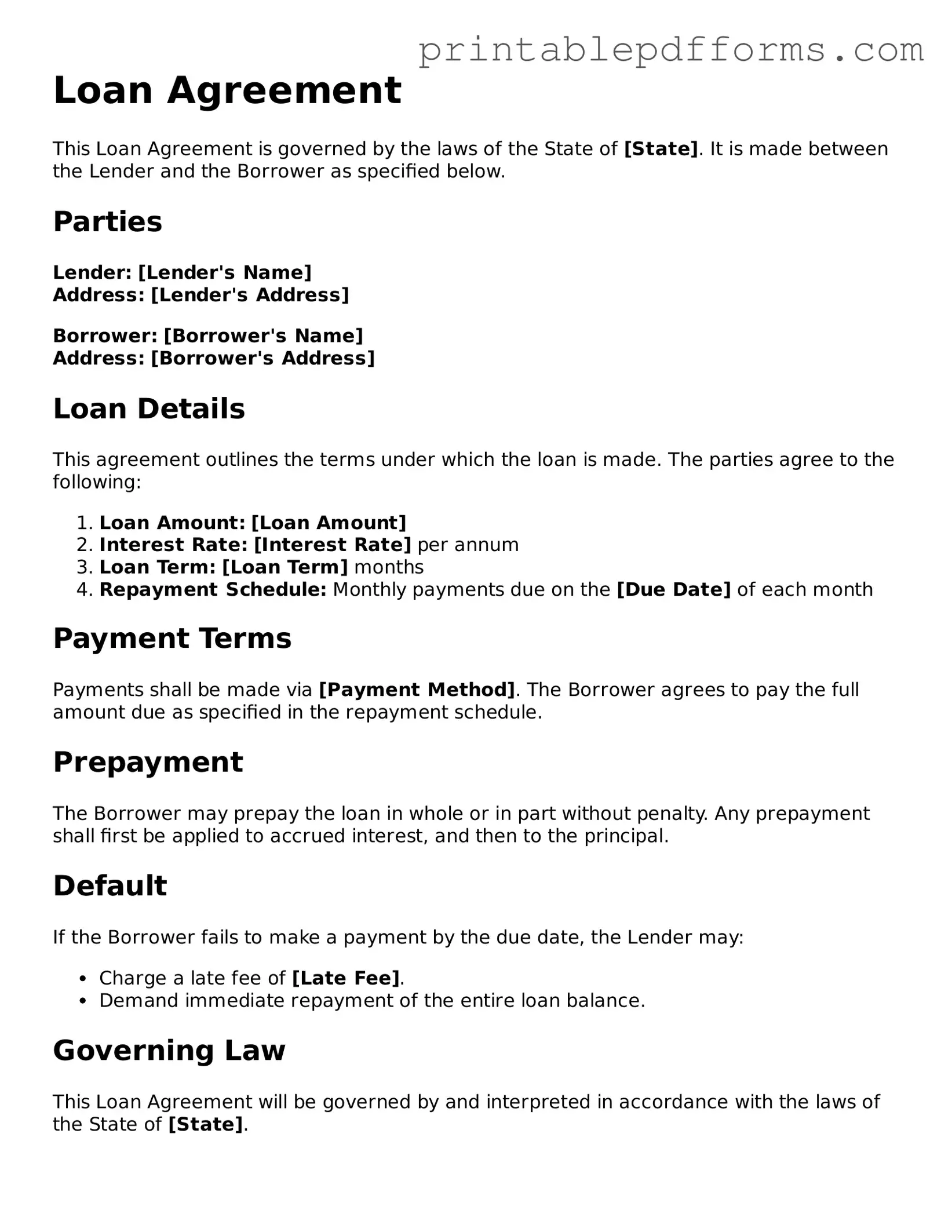Loan Agreement
This Loan Agreement is governed by the laws of the State of [State]. It is made between the Lender and the Borrower as specified below.
Parties
Lender: [Lender's Name]
Address: [Lender's Address]
Borrower: [Borrower's Name]
Address: [Borrower's Address]
Loan Details
This agreement outlines the terms under which the loan is made. The parties agree to the following:
- Loan Amount: [Loan Amount]
- Interest Rate: [Interest Rate] per annum
- Loan Term: [Loan Term] months
- Repayment Schedule: Monthly payments due on the [Due Date] of each month
Payment Terms
Payments shall be made via [Payment Method]. The Borrower agrees to pay the full amount due as specified in the repayment schedule.
Prepayment
The Borrower may prepay the loan in whole or in part without penalty. Any prepayment shall first be applied to accrued interest, and then to the principal.
Default
If the Borrower fails to make a payment by the due date, the Lender may:
- Charge a late fee of [Late Fee].
- Demand immediate repayment of the entire loan balance.
Governing Law
This Loan Agreement will be governed by and interpreted in accordance with the laws of the State of [State].
Signatures
By signing below, both parties agree to the terms outlined in this Loan Agreement.
Lender's Signature: ______________________ Date: _______________
Borrower's Signature: ______________________ Date: _______________
